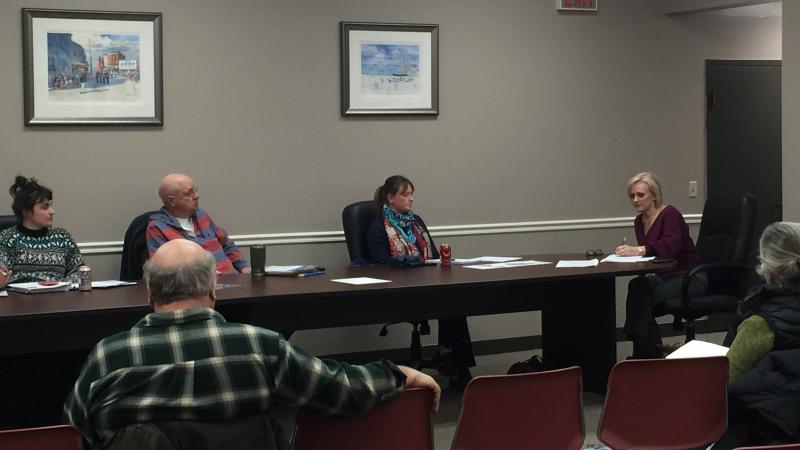The Boothbay Harbor Broadband Committee hosted a representative of Charter Communications Jan. 6 to better understand the company's broadband coverage through Spectrum. Regional Senior Director Melinda Kinney – with the company since 1997 – said internet services have changed for the better for Spectrum.
When TimeWarner was acquired by Charter, internet speeds were 50mbps download by 5mbps upload (50x5). After the acquisition, speeds improved to 60x5 and are now 100x5, Kinney said.
Spectrum’s services in the area are built on a fiber optics “backbone,” said Kinney. Fiber optics are run to a node which then disperses coaxial cable to homes and businesses. Spectrum currently provides some direct-to-business fiber optics connectivity on the peninsula, said Kinney. “We've worked quite a lot with municipalities across the state. Broadband build-out is definitely one of the top issues I work on almost on a daily basis.”
Kinney asked the committee and if there was any concern about specific pockets of limited service. Member Mike McBride said underserved areas are only one part of the issue on the peninsula.
“There are some number of people in both towns who are not served at all we believe (but) there appears to be some kind of capacity issue of what we have right now … which is what started all of this – because a lot of people are talking about 'Well, we've got to put in fiber' … That’s what we need you to take away from this.”
Members Tom Minerich and Ken Fitch agreed, saying while there are underserved pockets, the influx of summer residents and tourists severely bogs down the service.
“It drops dramatically,” said Fitch. “It is a perpetual problem. You notice as soon as the town closes up, the speed becomes more reliable. How do you address that, because we are a resort community and we have a huge need?”
Minerich said he has Spectrum services at home on Union Street and has a different service at a property across the street. “Frankly, the other one is much stronger.”
Kinney said she would like to go back to the engineering team and look at the loads and usage and determine if more nodes are needed, especially concerning the Union Street area and the entire downtown. Kinney suggested when the towns receive their inventory on underserved areas, Spectrum will look at how it can react to those needs and estimate costs.
Since spearheading the issue, committee chair Tricia Warren said she has become a proponent of fiber optics. She said better broadband may help draw young families and professionals to the region, connect patients to doctors and hospitals via telemedicine and connect students to institutions outside the area.
“I personally have met people who were thinking about moving to the area and have decided not to because we don't have a hospital and having telemedicine would be kind of a way of closing (that gap).”
Minerich asked how Spectrum reacts to its competitors who also provide services like fiber to the house. Kinney said one of the key factors is take-rate – how many potential customers will come out of a project. Lower income areas or rural areas typically have a small take-rate, she said. However, she said Spectrum likely offers the fastest broadband speeds in the area and will only get better as time goes on. “We continue to make significant investments in our infrastructure.”
The committee will meet with a Consolidated Communications Inc. representative on Monday, Feb. 3.



























